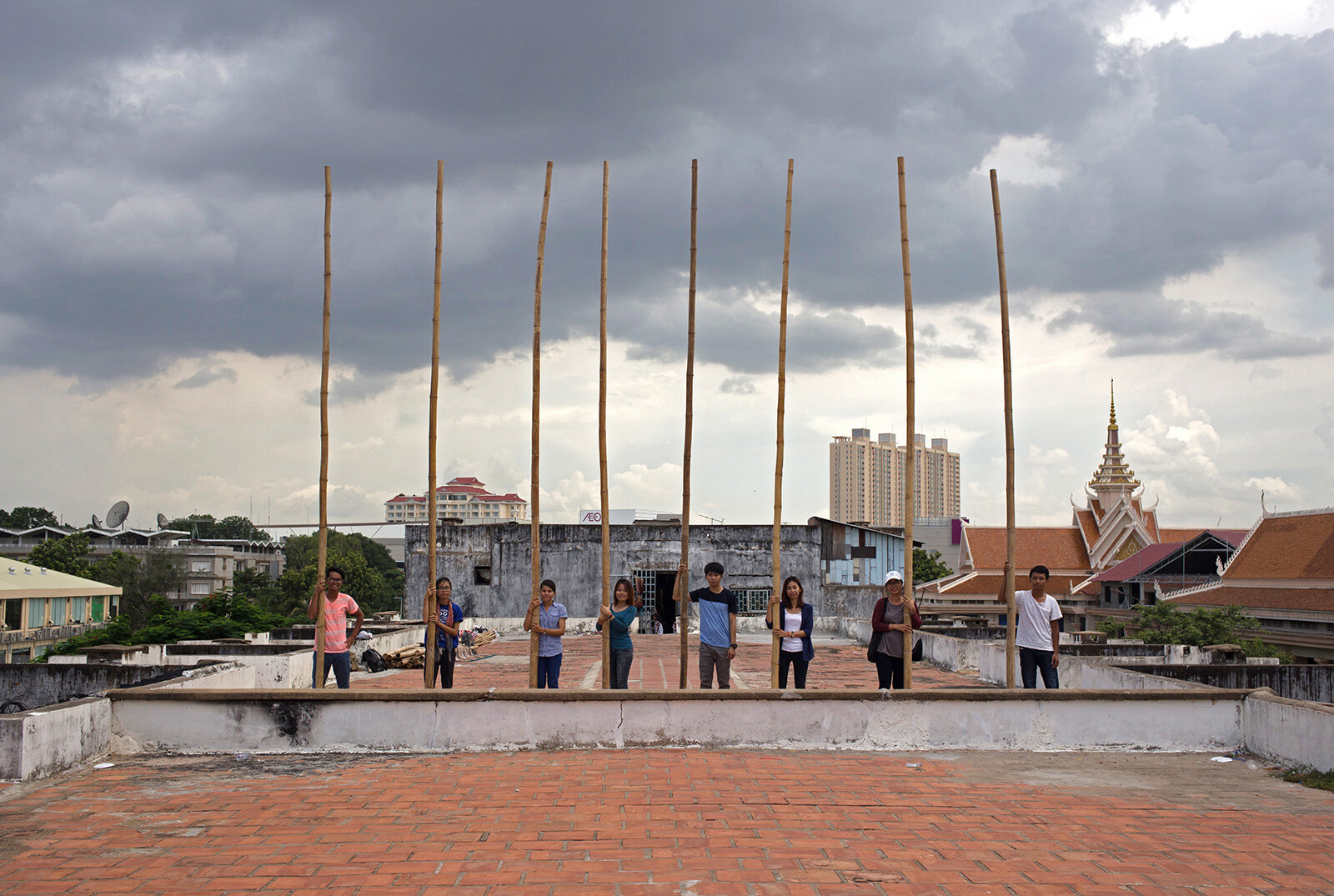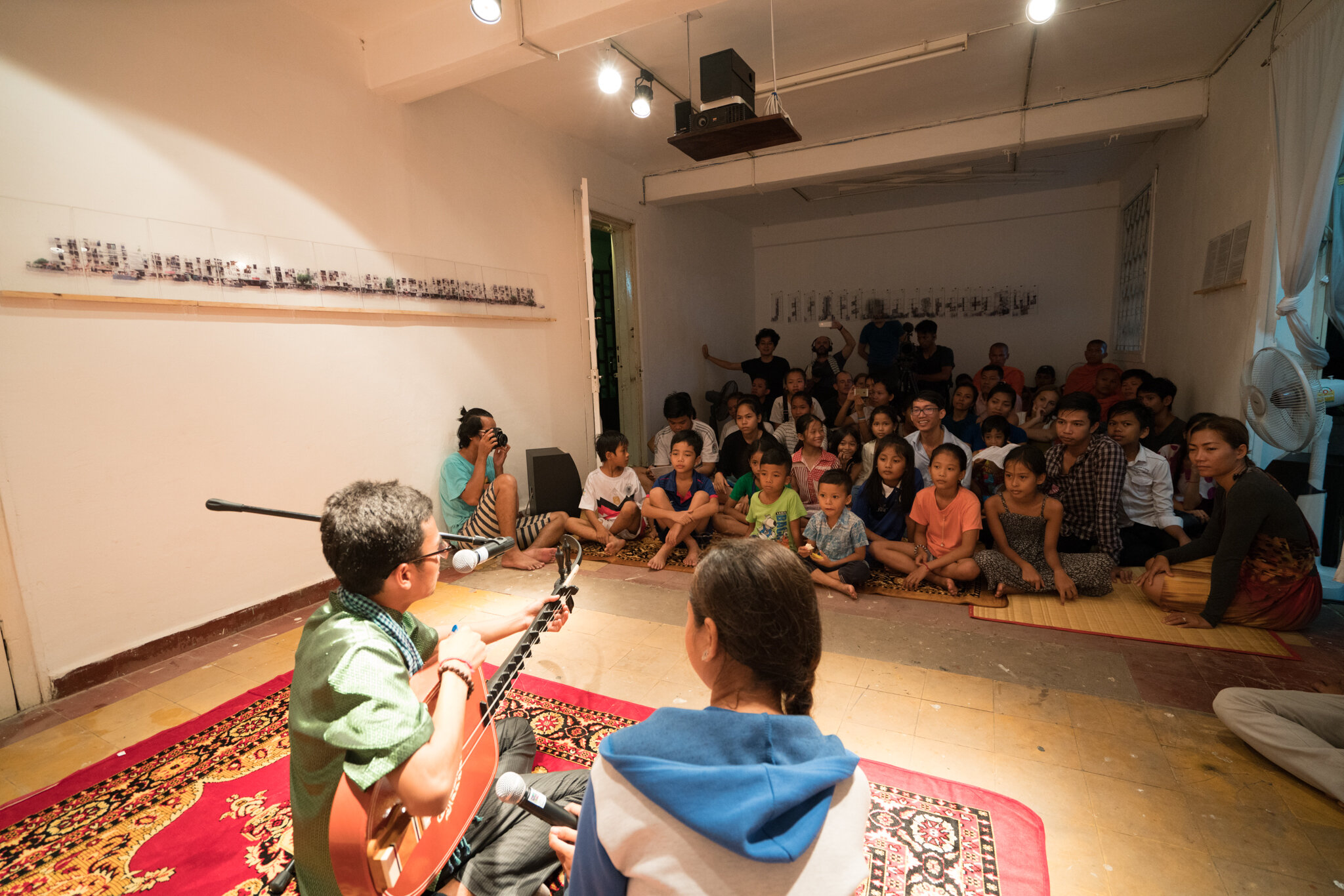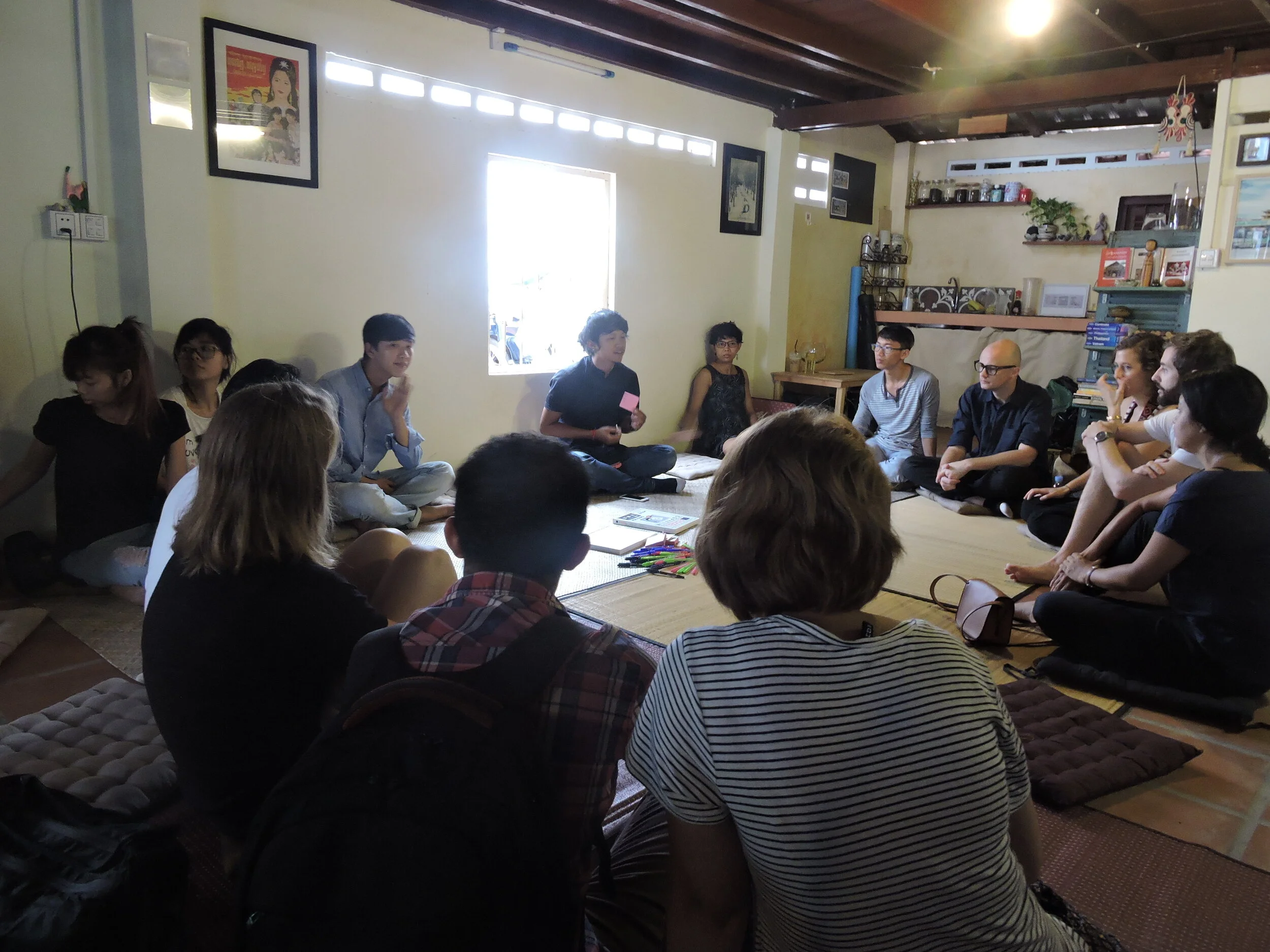
Sensing the Capital
25 May - 25 Jun 2017
6 events at 5 locations across Phnom Penh
Co-curators: Pen Sereypagna and Vuth Lyno
Organised by: Sa Sa Art Projects and The Vann Molyvann Project
Participating artists and projects: Chhum Phanith, Davy Chou, Eng Rithchandaneth, Mok Sombo, Nou Samnang, Pen Sereypagna, Roung Kon Project, Sao Sreymao, Sok Chanrado, Tan Vatey, The Vann Molyvann Project and collaborators, Yon Davy
Supported by: Khmer Architecture Tours, Space for Architecture Cambodia, World Monuments Fund
Sensing the Capital is a multi-exhibition and event project that proposes two key ideas: Sense and Capital, as an approach to investigate and understand Phnom Penh city as well as resources that intersect within it, crossing its border, and hovering its margin, across multi-discipline including art, culture, architecture, and urbanism, through the activation and the use of sensorium or the senses of both the spectators and the city.
As Cambodia adopts neoliberal metropolitanism and increasingly participates in the globalised economy, Phnom Penh has gone through a rapid and imbalanced transformation of its urban landscape and structure, migration and population growth, and environmental ecology. Over the last decade alone, Phnom Penh has witnessed numerous high-rises, shopping malls, apartment complexes and gated housing communities sprouting across the city centre and surrounding areas. However, these luxuries have also come with consequences: city lakes being filled up with sand, urban poor being evicted, public spaces being squeezed up, and historical buildings and their associated memories being demolished.
Sensing the Capital considers Phnom Penh as well as its human and cultural capital through urban research and artistic propositions that foreground human sensibility and consciousness and the city as a living and active agent. Through multiple exhibitions and events that take place at various Phnom Penh’s public, communal and private spaces, the project aims to engage with different groups of urban residents to sense the critical state of the city and its persistent resilience.







